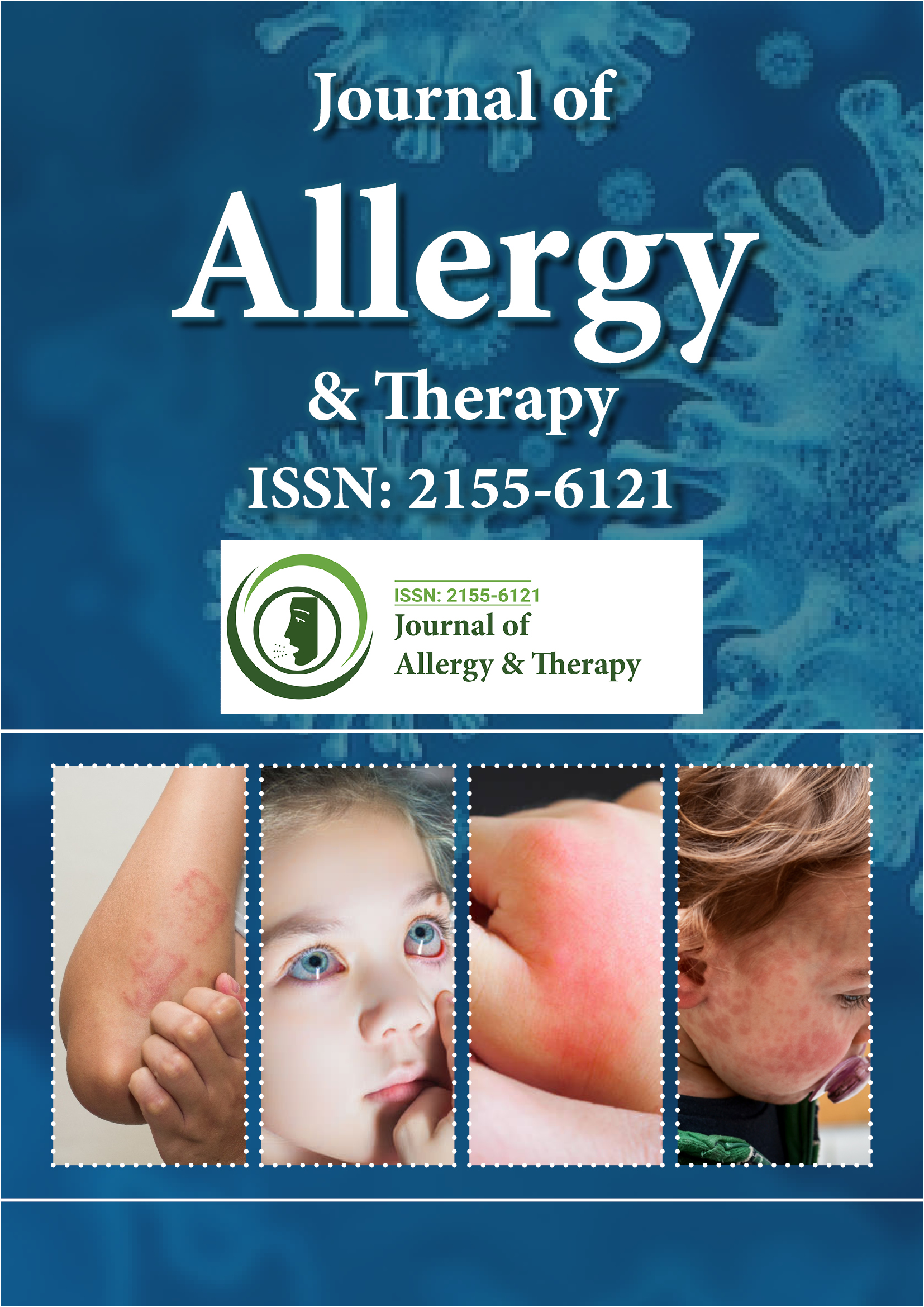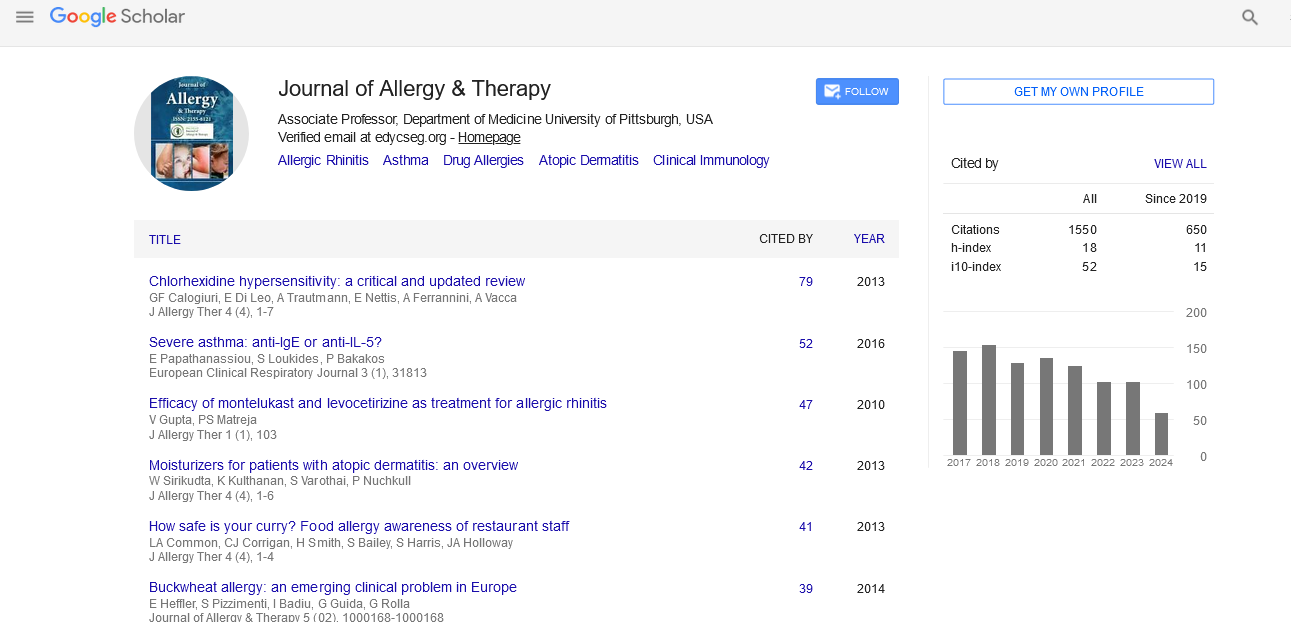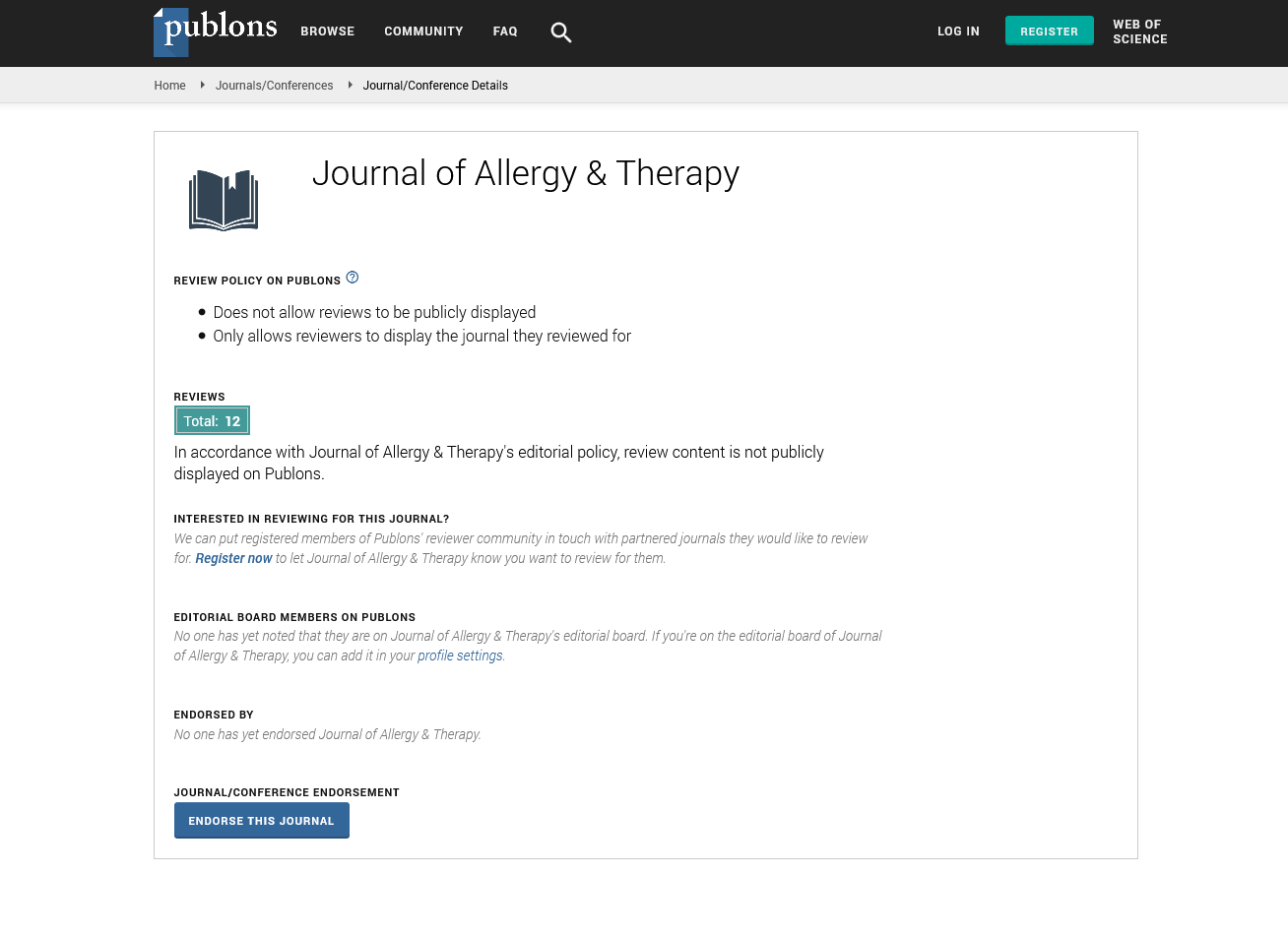Indexed In
- Academic Journals Database
- Open J Gate
- Genamics JournalSeek
- Academic Keys
- JournalTOCs
- China National Knowledge Infrastructure (CNKI)
- Ulrich's Periodicals Directory
- Electronic Journals Library
- RefSeek
- Hamdard University
- EBSCO A-Z
- OCLC- WorldCat
- SWB online catalog
- Virtual Library of Biology (vifabio)
- Publons
- Geneva Foundation for Medical Education and Research
- Euro Pub
- Google Scholar
Useful Links
Share This Page
Journal Flyer

Open Access Journals
- Agri and Aquaculture
- Biochemistry
- Bioinformatics & Systems Biology
- Business & Management
- Chemistry
- Clinical Sciences
- Engineering
- Food & Nutrition
- General Science
- Genetics & Molecular Biology
- Immunology & Microbiology
- Medical Sciences
- Neuroscience & Psychology
- Nursing & Health Care
- Pharmaceutical Sciences
Abstract
Are Basophils and T helper 2 Cells Implicated in Mastocytosis?
Ana Spínola, Joana Guimarães, Marlene Santos, Catarina Lau, Maria dos Anjos Teixeira, Rosário Alves and Margarida Lima
Background: Clinical signs and symptoms observed in patients with mastocytosis are not only related to organ infiltration, but also result of either local or systemic mast cells mediator release. Knowing that mast cells, basophils and T helper 2 (Th2) cells have been implicated in allergy, we hypothesized that basophils and Th2 cells could also be involved in the episodes of mediator release often seen in patients with mastocytosis and, in a small proportion, could be on the bloodstream in an activated mode and/or be over-reactive to stimuli.
Methods: We aimed to quantify and characterize, by flow cytometry, the basophil (CD45+dim, CD123+bright, CD294/CRTH2+, CD3- and HLA-DR-), Th2 (CD3+, CD294/CRTH2+) and activated (CD3+, HLA-DR+) T cell populations in the peripheral blood from 19 patients with mastocytosis, as well as the ability of peripheral blood basophils to be activated, thereby expressing CD63 and down-regulating CD193/CCR3 expression on the cell surface, in response to different stimuli (fMLP and anti-FcƨRI), as compared with 19 normal individuals.
Results: We found no evidence for increased basophil, Th2 and activated T cell counts, neither for over-reactive basophils in response to fMLP and anti-FcƨRI, in mastocytosis patients, as compared with normal individuals.
Conclusions: Using the present methodology, our results argue against a possible role of basophils and Th2 cells in the episodes of mediator release observed in patients with mastocytosis.


